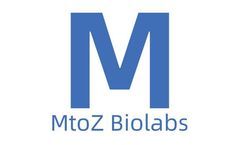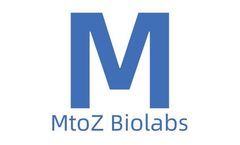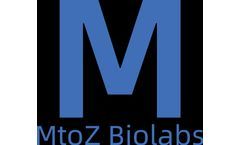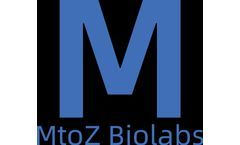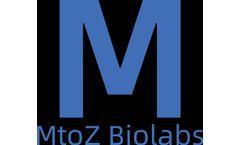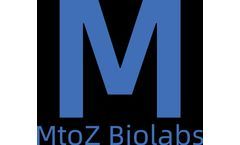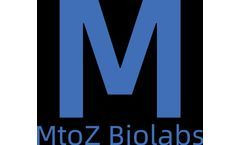Tissue Cells Articles & Analysis
107 articles found
The Sweeping Functional Roles of Acetylation The "acetylation code" has profound functional consequences throughout the cell. The classic example is in gene expression. Histone proteins, which package DNA into chromatin, are rich in lysine residues. ...
It’s an essential component of cell membranes, ensuring they have the right level of fluidity—not too rigid, not too floppy. ...
This approach allows for the insertion of genes encoding viral proteins into suitable expression systems such as bacteria, yeast, or mammalian cells. Once synthesized, these proteins spontaneously assemble into VLPs, providing a scalable and efficient way to produce vaccines. ...
Our experienced team specializes in providing advanced in situ hybridization (ISH) services, employing both bright field and fluorescent techniques to deliver precise insights into tissues and cells. The utilization of bright field microscopy allows for clear visualization of traditional ISH, where localization of nucleic acids within various biological samples ...
Understanding Histology Histology, the study of microscopic tissue structure, provides insights into the cellular makeup and organization of tissues. By employing various staining techniques, histologists can highlight specific cell types and extracellular matrix components, enabling a clearer visualization of tissue ...
Unlocking the Power of Organoids Organoids are three-dimensional structures that replicate the functions of actual organs within the body. They develop from progenitor cells, which researchers obtain either from embryonic tissues or pluripotent stem cells (PSCs). ...
Leukocyte Membrane in Bionic Nanomedicine Leukocytes are blood cells responsible for repairing tissue damage, fighting off invaders, etc. ...
These vectors are uniquely appealing due to their non-pathogenic nature, ability to transduce both dividing and non-dividing cells, and the capacity to induce long-lasting expression of the therapeutic gene. ...
Human brain has approximately 171 billion cells, of which slightly more than half (approximately 86 billion) are nerve cells. These 86 billion nerve cells are a diverse cell population with hundreds of specialized types and functions, but all originate from three neural cell lineages--neurons, oligodendrocytes ...
Cell culture is one of the major technologies in the life sciences. It is a general term used to remove cells, tissues or organs from animals or plants and place them in an artificial environment conducive to their survival and/or proliferation. ...
Collagen is a crucial structural protein, widely presenting in human skin, bones, tendons, ligaments, and other tissues. It's essential for maintaining the structural integrity and function of tissues. ...
In terms of targeted drug delivery, peptidomimetics can achieve target specific cells or tissues in the body. When peptidomimetics are conjugated with targeted antibodies or ligands, they can deliver drugs by selectively getting into diseased cells while reducing off-target effects. ...
Moreover, they can serve as disease biomarkers or drug targets.Studying differentially expressed proteins is a core area of proteomics, providing us with valuable information about the function and state of cells and tissues under different conditions.Differentially Expressed ...
The emergence of chimeric antigen receptor T-cell (CAR-T) therapy has revolutionized the treatment of certain cancers, providing a promising targeted approach to eliminate cancer cells. ...
Understanding the Cytoskeleton The cytoskeleton consists of three main types of filaments: Microfilaments (Actin Filaments): Involved in muscle contraction, cell movement, and cytokinesis. Intermediate Filaments: Provide structural support and stability, connecting cells through desmosomes and hemidesmosomes. ...
Firstly, the protein sample is incubated with a specific antibody, then the antibody-antigen complex is enriched with protein A/G magnetic beads, and finally, the level of protein ubiquitination is detected by immunoblotting.ImmunofluorescenceImmunofluorescence is a method for detecting the distribution and location of proteins in cells or tissues and can also be ...
Here are the typical steps for protein ubiquitination IP.Analysis Workflow1. Extraction of Cells or TissueCollect cell or tissue samples and lyse the samples with an appropriate cell lysis buffer (containing protease inhibitors) to release proteins.2. Sample Pre-TreatmentSamples can be broken down by sonication or centrifugation ...
After the bait protein reacts with the target protein, a band corresponding to the target protein can be detected depending on the bait protein used.Experimental Materials1. Samples: Cell or Tissue Extracts2. Western Blot Kit With Ubiquitination-Specific Antibody and Target Protein-Specific Antibody3. ...
In contrast, monoclonal antibodies have higher specificity because they target only a single epitope and isotype, making them perform well in research on natural tissues, such as IP and flow cytometry applications.Literature SearchOnce the required antigen and antibody characteristics are determined, the next step is to conduct an in-depth literature search to find publicly ...
Tau protein is a microtubule-associated protein, mainly present in nerve cells, and participates in the stabilization of microtubules. In certain neurodegenerative diseases, such as Alzheimer's disease (AD), Tau protein may undergo abnormal phosphorylation and aggregation, forming so-called Tau tangles or neurofibrillary tangles.Ubiquitination is a kind of post-translational ...





